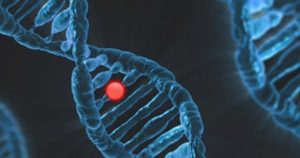Nature: Childhood liver cancer actually originated from a hepatoblast!
- Aspirin: Study Finds Greater Benefits for These Colorectal Cancer Patients
- Cancer Can Occur Without Genetic Mutations?
- Statins Lower Blood Lipids: How Long is a Course?
- Warning: Smartwatch Blood Sugar Measurement Deemed Dangerous
- Mifepristone: A Safe and Effective Abortion Option Amidst Controversy
- Asbestos Detected in Buildings Damaged in Ukraine: Analyzed by Japanese Company
Nature: Childhood liver cancer is caused by epigenetic mutations, and its origin is just a hepatoblast!
- Red Yeast Rice Scare Grips Japan: Over 114 Hospitalized and 5 Deaths
- Long COVID Brain Fog: Blood-Brain Barrier Damage and Persistent Inflammation
- FDA has mandated a top-level black box warning for all marketed CAR-T therapies
- Can people with high blood pressure eat peanuts?
- What is the difference between dopamine and dobutamine?
- How long can the patient live after heart stent surgery?
Nature: Childhood liver cancer actually originated from a hepatoblast! Childhood liver cancer is caused by epigenetic mutations, and its origin is just a hepatoblast!
Hepatoblastoma (HB) is the most common malignant tumor in children and one of the malignant tumors with the highest incidence among children under 5 years of age.
HB is believed to be derived from liver precursor cells, and its morphology is similar to immature liver cells.
Because the prognosis of patients varies greatly, tumor distribution, tumor staging, and complete tumor resection are all considered prognostic indicators of HB.
Researchers at Hiroshima University analyzed molecular studies of nearly 160 cases of childhood liver cancer, and discovered molecular markers that help understand and treat huge differences in prognosis.
This research was published in “Nature Communications” on September 20, and the paper is titled “Genetic and epigenetic basis of hepatoblastoma diversity”.

Hepatoblastoma (HB) is the most common liver cancer in children. It manifests as abdominal pain and tumorous abdominal masses, and it mainly affects children under three years of age, especially children who are born prematurely or with very low birth weight.
Surgical removal of tumors and preoperative chemotherapy have been shown to cure HB patients, but the prognosis of HB patients also varies greatly.

The underlying cause is not clear, nor is the genetic susceptibility and molecular aberrations that cause these differences. The term molecular aberration refers to any abnormalities in genes that can cause changes in gene expression. Molecular aberrations may be gene mutations, duplication of DNA fragments, or abnormal DNA methylation patterns.
Methylation and demethylation involve the addition or removal of one carbon atom and three hydrogen atoms (a group of methyl groups) from molecules throughout the body, respectively, like billions of small switches. In DNA, methyl groups are added or removed from cytosine nucleotides along the gene sequence.
Cytosine methylation is closely related to the level of gene expression. It also provides an important epigenetic effect (or how your environment or even behavior changes the way your body reads DNA sequences). Transforming into different body functions is crucial, especially during development.
In addition, a comprehensive genomic analysis of HB tumor cells (a collection of all genetic material in them) showed that they are the least mutations in all childhood solid tumors. This strongly suggests that epigenetic variation is one of the causes of the disease.
“In order to improve the prognosis of HB patients, we really need to know what these epigenetic driving factors are,” said Eiso Hiyama of the Center for Basic Research and Development of Natural Sciences at Hiroshima University, “and explore what’cells of origin’ are – basically Is the origin of everything.”
Therefore, the research team performed genomic, epigenome, and methylation analysis on 163 untreated childhood liver tumors. The survey is divided into three main parts.
First, the researchers identified genetic variants to clarify the genomic drivers of HB, thereby elucidating the genetic aspects of cancer susceptibility. Second, they delineated a “methylation profile” (a collection of all methylation modifications in the genome) to reveal the many ways in which HB cancer originated.
These different pathways are categorized in turn according to their environmental impact. In doing so, scientists have revealed the origin of different subtypes of cancer related to different pathological characteristics, genomic changes, and gene expression.
Finally, the research team combined clinical information with all these molecular characteristics to accurately stratify different types of HB patients.
In most cases, they found that the occurrence of cancer is driven by the increased production of the transcription factor ASCL2 and the selective methylation pattern of insulin-like growth factor 2 (IGF2).
Transcription factors control the rate of transcription of genetic information from DNA to messenger RNA (the molecular chain that plays an intermediary role in genetic activities). Messenger RNA reads and copies the DNA formula, and then continues to “translate” the formula into various proteins that make up most parts of the human body. At the site of HB cancer, the ASCL2 transcription factor plays a vital role in this process.
At the same time, IGF2 is believed to stimulate the growth of children’s tissues and cell differentiation.
Methylation analysis also revealed that HB cancer is characterized by a decrease in the number of methylated cytosines in the enhancer region. The enhancer region of the genetic code is the site where transcription factors bind to it—in this case, the region where ASCL2 binds to DNA.
This leads to an exceptionally extended production time for ASCL2. This, together with the IGF2 methylation pattern similar to that of fetal liver, indicates that the “cell of origin” is a hepatoblast. Hepatoblasts are the precursors of fetal liver cells.
They are very similar to intestinal epithelial cells in many respects. Intestinal epithelial cells are protective cells that line the outer surface of organs. Like cancer cells, they are prone to proliferate in large numbers.
This systematic analysis of HB tumors should now allow a more accurate ranking of the risks faced by different patients and the genomic therapies that are more suitable for their particular circumstances.
Reference:
https://www.nature.com/articles/s41467-021-25430-9
Nature: Childhood liver cancer actually originated from a hepatoblast
(source:internet, reference only)
Disclaimer of medicaltrend.org
Important Note: The information provided is for informational purposes only and should not be considered as medical advice.



